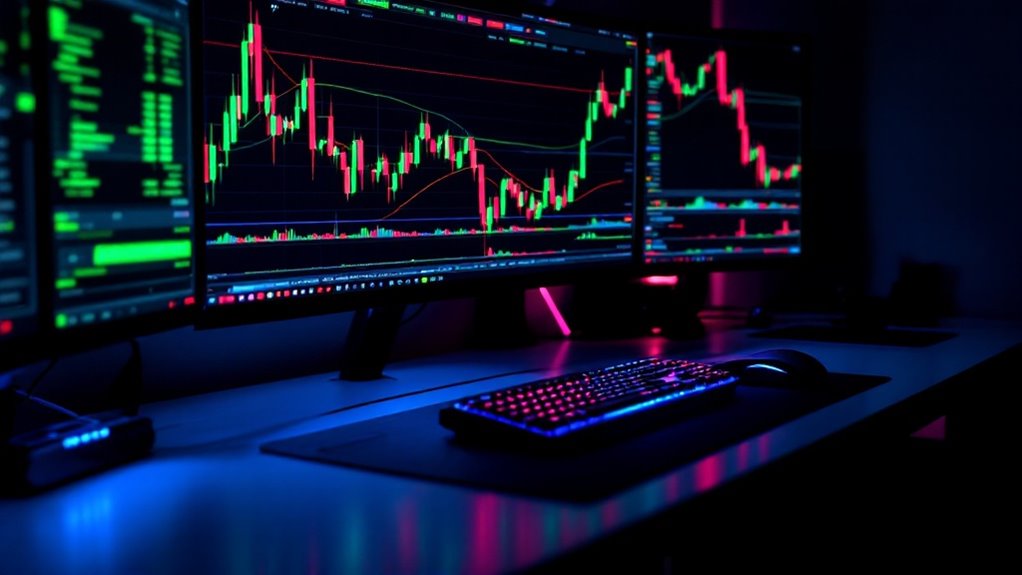Cryptocurrency market cap reveals the total value of a digital asset by multiplying its current price by circulating supply. This essential metric helps investors navigate the crypto landscape, with large-caps exceeding $10 billion considered established, mid-caps between $1-10 billion viewed as stable, and small-caps under $1 billion offering higher risk-reward potential. While market cap provides important insights, it's just one piece of the investment puzzle, alongside trading volume and liquidity factors that shape the complete valuation story.

In the fast-paced environment of digital finance, cryptocurrency market capitalization stands as a beacon for investors steering through the choppy waters of this emerging asset class. Like a ship's radar in stormy seas, market cap provides essential navigation data by multiplying a cryptocurrency's current price by its circulating supply, offering a snapshot of its total value at any given moment.
The crypto landscape stretches from towering giants to tiny seedlings, each measured by their market cap footprint. Bitcoin, the evergreen patriarch of cryptocurrencies, commands a staggering $1.9 trillion market cap, while thousands of smaller digital currencies vie for attention in its shadow. These digital assets fall into distinct categories: large-caps over $10 billion stand like ancient redwoods, sturdy and established; mid-caps between $1-10 billion sway like mature maples; and small-caps under $1 billion sprout like ambitious saplings, full of growth potential but vulnerable to market winds. Investors often rely on these market cap categories to develop their investment strategies. High trading volume typically indicates a healthy and liquid market, making assets more attractive to institutional investors.
Yet market cap, for all its utility, isn't without its blind spots. Like a mirage in the desert, it can sometimes distort reality. The metric doesn't capture the essential elements of trading volume or liquidity, and clever developers can manipulate it by creating massive supplies of nearly worthless tokens. Lost or inaccessible coins still count in the calculations, like phantom shares in a cosmic ledger. Supply and demand fundamentals remain the core drivers of a cryptocurrency's true value in the market.
Market cap illuminates but also deceives, offering a distorted reflection of crypto value through its algorithmic lens of price and supply.
The global cryptocurrency market has swelled to over $3.7 trillion, reflecting humanity's growing embrace of digital assets. This figure dances daily, responding to market sentiment like leaves in the wind. Traditional investors, accustomed to the steady rhythms of stock market capitalizations, often find themselves dizzy in this new domain where values can double or halve in the blink of an eye.
Smart investors use market cap as just one instrument in their analytical orchestra. They combine it with other metrics, creating a symphony of data that helps them navigate this digital frontier.
In the end, understanding market cap is like learning a new language – it opens doors to opportunities while demanding respect for its complexities and limitations.
Frequently Asked Questions
How Often Does Cryptocurrency Market Cap Data Get Updated?
Cryptocurrency market cap data typically updates every 1-5 minutes through major data providers, with some platforms renewing in real-time. High-frequency trading systems can update in milliseconds, while daily aggregates are also maintained.
Can Market Cap Manipulation Occur in the Cryptocurrency Market?
Yes, market cap manipulation frequently occurs in cryptocurrency markets through various methods like wash trading, pump and dump schemes, spoofing, and coordinated actions by large holders to artificially influence prices and trading volumes.
Which Exchanges Are Most Reliable for Checking Cryptocurrency Market Caps?
Binance, Coinbase, and Kraken are widely considered the most reliable exchanges for checking cryptocurrency market caps due to their robust security measures, high trading volumes, and adherence to regulatory standards.
Does Market Cap Affect a Cryptocurrency's Long-Term Stability?
Market capitalization considerably influences cryptocurrency stability. Higher market caps generally indicate greater resistance to manipulation, increased liquidity, and broader adoption. However, other factors like regulations and market sentiment also impact long-term stability.
Why Do Some Cryptocurrencies Have Unusually High Market Caps Initially?
Cryptocurrencies often show high initial market caps due to large pre-mined supplies, limited token circulation, concentrated ownership among founders, and speculative hype driven by marketing efforts and early investor interest.









